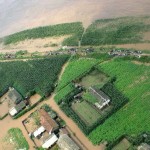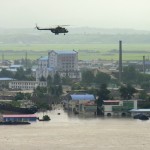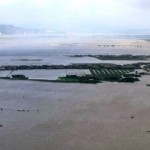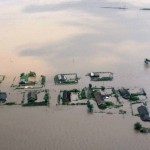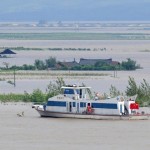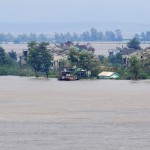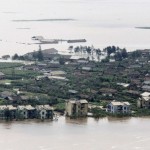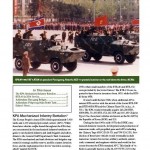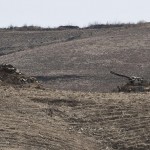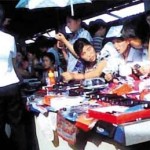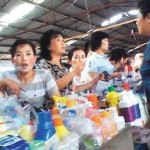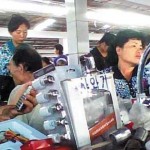Story 2: The Inauspicious Life of Pilots
Daily NK
Yoo Gwan Hee
8/20/2010
…In North Korea, pilots receive top class treatment alongside submariners and the missile corps. They live above the law in many ways. For instance, if a pilot murders someone in society and then returns to their unit, M.P.s cannot arrest them.
While the top choice of middle school graduates is to work in the No.5 Department of the Central Committee of the Party, that which oversees every aspect of Kim Jong Il’s life, pilot is a popular second choice. The primary condition for selection is family background.
Until the 1980s, offspring of normal workers could be selected if they had a good academic record and enough physical strength. However, any person whose family had committed a political crime was excluded. Also, if a family member had sided with South Korea or went missing during the Korean War, they would be excluded, too.
Until this period, the occupation of pilot was deemed to be a dangerous job and children of the elite did not consider it as a career. However, as the economic crisis began in the 1990s, this view changed. Many of the children of elite officials now choose to become pilots.
Currently, pilots still receive ‘special treatment’ in North Korea; however, it is not particularly special any more. Compared to Party officials, who make money in business, the feeling of deprivation which pilots feel has increased a lot.
Pilots are still bound to the state for their living, while the elite increase their wealth and authority through foreign currency earning and market business.
Until the early 1990s, “No. 4 supplies,” which are given to pilots, were free and extras were sold to their families if necessary. Also, since North Korea was worried about the pilots’ mental states, they took care of family issues and distributed supplies to their families once a month.
Even during “The March of Tribulation” in the mid-1990s, normal food distribution was given to families of pilots. However, as the atmosphere in society changed, their stress is increasing. Children of pilots are becoming a target in schools; teachers demand much of pilots’ children first.
Air Force Units receive a relatively good coal supply, however, since the absolute quantity is still lacking, they need to prepare firewood on their own, too. Until the early 1990s, if one or two packs of cigarette, soybean oil, and beer were given to workers on a farm in the surrounding area or a forest ranger, firewood might come in return. However, the times have changed.
Wives of pilots also have to enter the battle. Wives sell distributed supplies to wholesalers or sell them directly in farming villages in the surrounding area.
However, even in the situation where a lot of workers receive not even a single grain of rice from the nation, the supply for pilots is still special. However, since pilots do not have the authority to use it for business and bribery like other officials; their practical standard of living is not very different from a person who sells home appliances in the market.
The biggest stress which North Korean pilots feel is their concern for their old age. Currently in North Korean society, the treatment you receive in active duty and that of the retired are very different.
Until the 1990s, North Korea praised pilots as a “treasure of the nation” and promised them lifelong care. But after 2000, the retired were completely abandoned. The national pension is worth less than a price of one kilogram of corn.
Usually in other countries, the rising generation has more discontent toward the government compared to the mature group, but in North Korea it is the opposite and this is the reason for the phenomenon. When retired, they need to farm or do business in the market, but retirees are short of market experience and strength. Current pilots, observing the lives of their former comrades, cannot feel comfortable about it.
Now we are in an era where even a pilot receiving “top” level treatment from North Korea attempts an escape, and this is not surprising anymore.
Story 1: Pilot Privileges Fade into History
Daily NK
Yoo Gwan Hee
8/11/2009
…[S]pecial employees, such as air force pilots or submarine captains, belong to a class which is treated as the most exceptional in North Korea (notwithstanding officials or members of elite organizations). Before the start of the 21st century, pilots enjoyed considerable privileges. The North Korean state paid special attention to cultivating pilots, showering them with preferential treatment. Goods provided to pilots and their family members were entirely free and a separate compensation-based ration system applied to the whole group.
So, in the North, the closest thing to a “summer vacation” as enjoyed by the people of the free world would inevitably be the “recreation” of pilots. In North Korea, pilots and their family members were permitted vacation once a year and once every two years, respectively. Submarine captains were entitled to similar terms.
Some of the recreation centers used by pilots and their families include the “Galma Recreation Center” in Wonsan, the “Sokhu Recreation Center” in South Hamkyung Province, and the “Jooeul Recreation Center,” among others. All are located near the ocean, and are unparalleled in terms of scenery. In the case of the Galma Recreation Center, there are two buildings housing bedrooms for the visitors standing side-by-side in a shady area, while a separate dining hall and indoor gymnasium can also be found.
Usually, three to four singles and four to five married households from one unit (regiment level) could use the recreation center at any one time.
Single and family rooms are separate. In the former, there are four single beds and in the latter, two double beds. According to regulations, only two children per family are permitted; those who need to bring three or four children have to work out an arrangement with the management office.
In the centers, there is no designated work, but meals and sleeping times must be strictly kept. Breakfast begins at 7:30 A.M., lunch at 12:30 P.M. and dinner at 6 P.M.; naps can only be taken between 2 and 4 P.M. Bedtime is fixed at 10 P.M. Guests have to strictly adhere to these times.
Besides these restrictions, the visitors have the freedom to spend time as they want. Some people play Chinese chess (janggi) and others cards while the rest may choose to head for the beach.
The menus for the week are displayed next to the windows from which the food is served. Soup and bowls of rice are distributed per person and up to four side dishes are distributed to each table (a table consists of two groups).
Until the early 1990s, the most popular food among those served at the recreation centers was bread made in the former Soviet Union. Every morning, a Russian bread called “Khleb,” on which butter or powdered sugar could be put, was provided. The fruit which was given to each person at lunchtime was also popular with the visitors.
The period of recreation enjoyed by pilots was usually 20 days. However, some families, rather than using up all of their days, left the recreation centers in a hurry to visit parents or relatives in their hometowns. Usually, an additional 15 days of vacation was added unto the 20 recreation days, during which many people take trips to their hometowns.
Some diligent wives would continue to work even while in the centers. Surrounding the Galma Recreation Center, located on the shore of the East Sea, or the Sokhu Recreation Center are heaps of seaweed which are washed ashore with the tides. The wives, after washing the seaweed in the ocean water, dried it on the seashore.
Two or three 50-kg bags are barely sufficient for that much dried seaweed. Wives sent these to their in-laws or families with satisfaction.
However, such extravagant levels of recreation for pilots began to disappear in the mid-1990s with the March of Tribulation. Now, even when the state issues recreation permits, people tend to take off for hometowns, not to recreation centers.
Further, with the decline in the national esteem of pilots in recent years and due to the fact that the items which are provided as rations tend to be sold in the markets for additional income, the luxurious lives of the special class are becoming less impressive all the time. Recently, some pilots have even been selling their cigarette rations (one month’s worth) in the jangmadang.
Corruption also afflicts pilots to no small extent. Schools request additional money and products from the children of pilots, due to the popular image of affluence they command.
The sense of deprivation among pilots and family members, who are supposedly among the most revered people in North Korea, has been growing. Their status has indeed decreased over the years; one cannot ignore the fact that the standard of living of private merchants or foreign currency earners has now outpaced that of pilots, who are dangerously dependent on rations for their survival.

